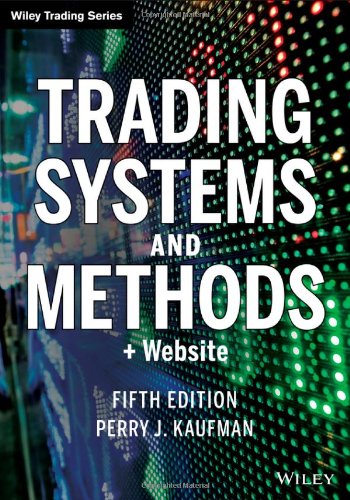دانلود کتاب Trading Systems and Methods, + Website - Original PDF
Author:
Perry J. Kaufman
0 (0)
توضیحات کتاب :
The ultimate guide to trading systems, fully revised and updatedFor nearly thirty years, professional and individual traders have turned to Trading Systems and Methods for detailed information on indicators, programs, algorithms, and systems, and now this fully revised Fifth Edition updates coverage for today's markets. The definitive reference on trading systems, the book explains the tools and techniques of successful trading to help traders develop a program that meets their own unique needs.Presenting an analytical framework for comparing systematic methods and techniques, this new edition offers expanded coverage in nearly all areas, including trends, momentum, arbitrage, integration of fundamental statistics, and risk management. Comprehensive and in-depth, the book describes each technique and how it can be used to a trader's advantage, and shows similarities and variations that may serve as valuable alternatives. The book also walks readers through basic mathematical and statistical concepts of trading system design and methodology, such as how much data to use, how to create an index, risk measurements, and more.Packed with examples, this thoroughly revised and updated Fifth Edition covers more systems, more methods, and more risk analysis techniques than ever before.The ultimate guide to trading system design and methods, newly revisedIncludes expanded coverage of trading techniques, arbitrage, statistical tools, and risk management modelsWritten by acclaimed expert Perry J. KaufmanFeatures spreadsheets and TradeStation programs for a more extensive and interactive learning experienceProvides readers with access to a companion website loaded with supplemental materialsWritten by a global leader in the trading field, Trading Systems and Methods, Fifth Edition is the essential reference to trading system design and methods updated for a post-crisis trading environment.
سرچ در وردکت | سرچ در گودریدز | سرچ در اب بوکز | سرچ در آمازون | سرچ در گوگل بوک
1,247 بازدید 0 خرید










